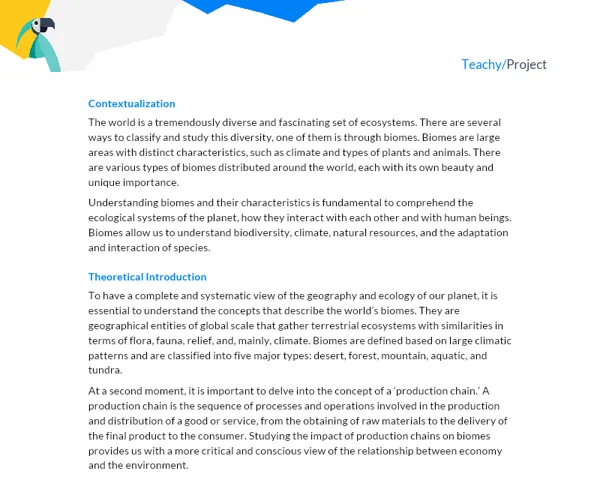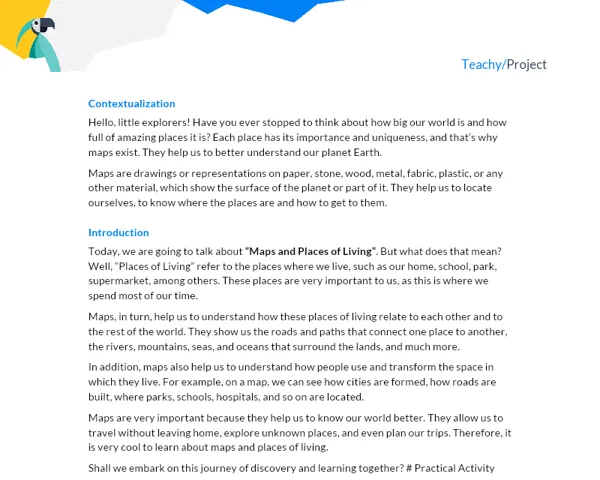Contextualization
Hello, class! Let's embark on a journey of discoveries about the relationship between trade, livestock, agriculture, and industry. In our daily lives, we often do not realize, but these four elements are deeply connected and are the basis of how societies organize themselves and produce what they need. Let's learn how all of this fits together and how we can think about the future in a more sustainable way.
Agriculture is the practice of cultivating the land to produce food and other products for consumption. It is one of the oldest activities of humanity and, for a long time, was the main form of subsistence. Livestock farming, in turn, is the breeding of animals for the production of food, such as meat, milk, eggs, wool, among others. Industry, finally, is the set of activities that transform the products of the land and animals, as well as other raw materials, into consumer goods.
The Importance of these Elements
These three activities, agricultural, livestock, and industrial, are the basis of our global economic system. They are interconnected in various ways, and our way of life depends on them. For example, agriculture and livestock farming provide most of our food, while the industry transforms these products into something we can consume.
Trade, in turn, is the act of buying and selling goods and services. It is fundamental to the global economy because it allows nations to exchange the products they produce in excess for those they do not have. Trade also drives innovation and specialization, as each country can focus on producing goods and services for which it has comparative advantages.
The Relationship between these Elements
These four activities are interconnected in various ways. For example, agriculture and livestock farming provide the products that the industry transforms into consumer goods. In turn, the industry produces goods that are sold both in the domestic and foreign markets, driving trade. Trade, in turn, influences what is produced, as producers tend to focus on what is most profitable.
Now that we understand the importance of these concepts, let's embark on an adventure of discoveries and learning? In this project, we will explore in a practical and fun way how trade, livestock, agriculture, and industry relate and how we can think about a more sustainable future. Ready? Let's go!
Practical Activity: 'From Earth to Market: Our Trade Route'
Project Objective
The objective of this activity is for students to understand the relationship between livestock farming, agriculture, industry, and trade. In addition, they will develop teamwork, time management, research, communication, and problem-solving skills.
Project Description
In this project, students will act as managers of a farm and a small factory. They will have to manage food production and animal breeding on the farm and then transform these products in the factory. Then, they will have to plan the sale and distribution of these products, learning about the concept of trade.
Necessary Materials
- Cardboard or cardstock
- Sheets of paper
- Colorful pens, colored pencils, crayons
- Scissors
- Glue
- Old magazines (for cutting)
- Textbooks (for reference)
Step by Step
-
Group Formation: Form groups of 3 to 5 students. Each group will be responsible for managing a farm and a factory.
-
Farm Planning: Each group must plan their farm, deciding which foods to grow and which animals to raise. Remember to consider the climate and available space.
-
Farm Production: Groups must produce food and raise animals on the farm. Use the available materials to represent the farm and the animals.
-
Factory Planning: After production on the farm, groups must plan production in the factory. How will the food and animal products be processed in the factory? Remember that the factory must align with what the farm produces.
-
Trade: Now, groups must plan how they will sell and distribute the factory's products. They can sell to other farms or directly to consumers, for example. Remember that trade is an exchange, so it is important to think about what the farm needs and what the factory can offer.
-
Project Presentation: Finally, each group must present their project to the class, explaining the choices they made and what they learned about the relationship between livestock farming, agriculture, industry, and trade.
Delivery Format
The project delivery will be the presentation to the class. However, groups must also write a brief report describing what they did, the choices they made, and what they learned from the activity. This report can be handwritten or typed and must be submitted one week after the presentation.
Remember, the most important thing is to have fun, work as a team, and learn new things! Good luck, farm and factory managers!


